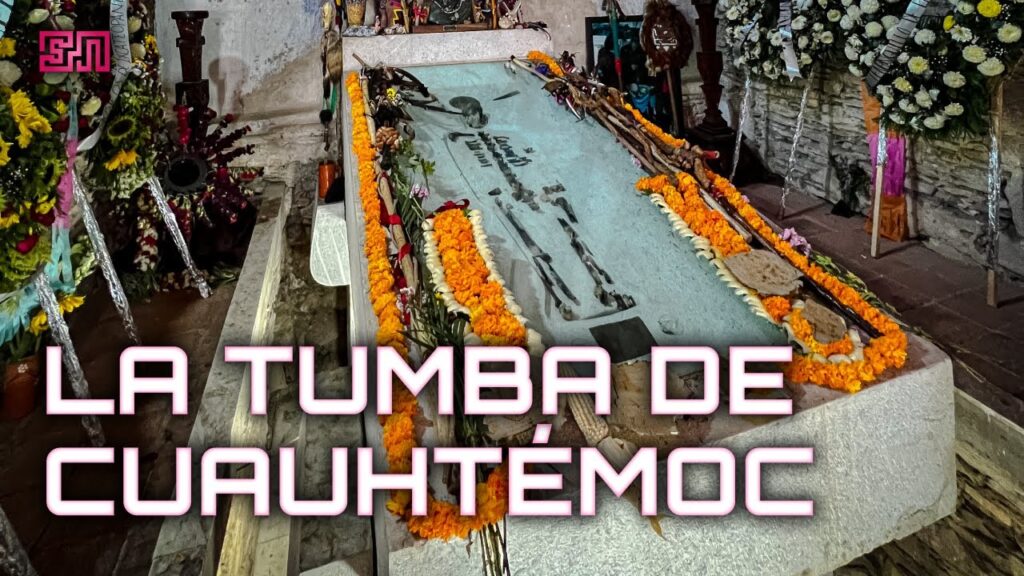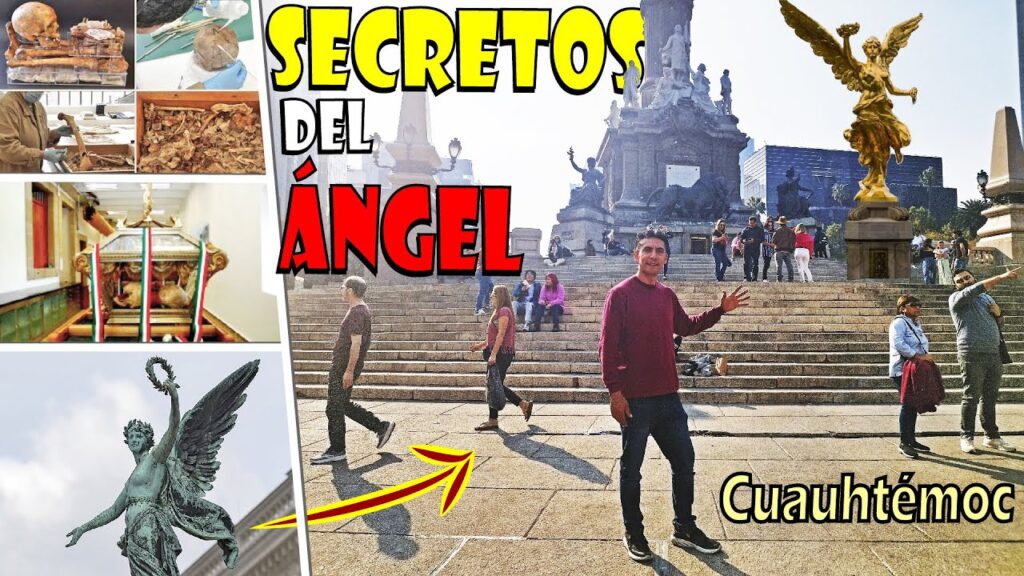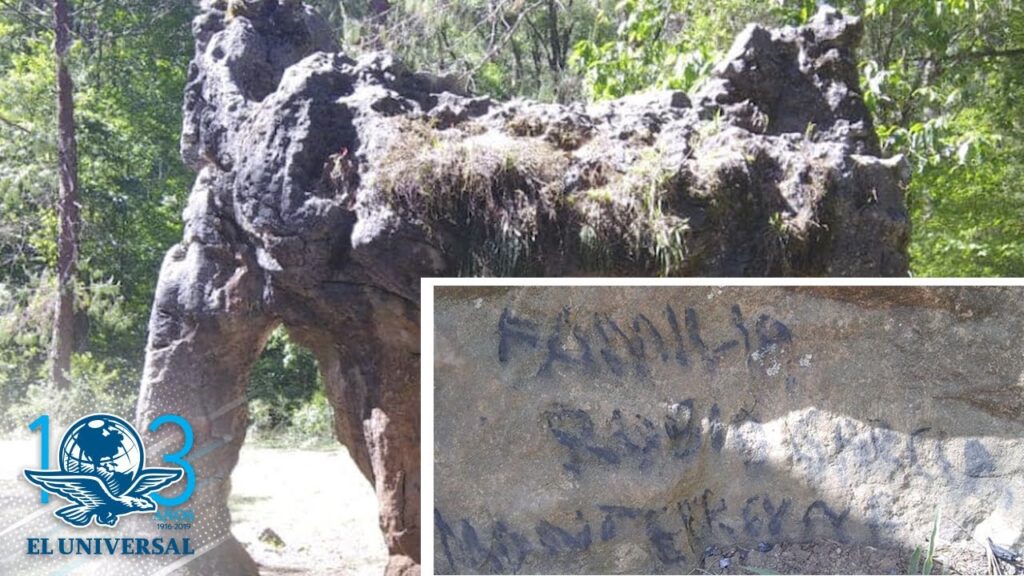Exploring the Mysteries of Cuauhtémoc’s Resting Place in Ixcateopan
In the shadow of the Sierra Madre del Sur, in the state of Guerrero, lies the small town of Ixcateopan, a place steeped in history and shrouded in mystery. It is here that the last Aztec emperor, Cuauhtémoc, is said to have been laid to rest. Visitors to Ixcateopan are greeted by the stark beauty of the town’s whitewashed walls, cobblestone streets, and the penetrating tranquility of a place seemingly frozen in time.
The story of Cuauhtémoc is one of bravery and tragedy. As the Aztec empire floundered under the weight of the Spanish conquest, Cuauhtémoc arose as a symbol of resistance, fighting valiantly against the invaders until his capture in 1521. Following years of imprisonment and torture, the fallen emperor was executed on the orders of Hernán Cortés. According to local lore, his loyal subjects carried his body back to Ixcateopan, where he was secretly interred in the town’s church.
The discovery of what is claimed to be Cuauhtémoc’s remains in 1949 put Ixcateopan on the map. Inside the church of Santa María de la Asunción, an unassuming slab of stone marks the spot where bones and artifacts purported to belong to the emperor were unearthed. The site has since become a place of pilgrimage for those wishing to pay their respects to the last defender of the Aztec people. A sense of reverence permeates the air as visitors from far and wide come to honor the memory of this historical figure.
While the authenticity of the remains is a subject of debate among historians, the cultural significance of Cuauhtémoc’s resting place is undeniable. For the indigenous communities of Mexico, the site represents a poignant connection to their heritage and a symbol of resistance against foreign domination. Each year on February 23rd, the town of Ixcateopan commemorates the anniversary of the discovery with vibrant ceremonies and traditional Aztec dances, bringing the past to life amidst the rhythms and ritual.
Ixcateopan’s ties to Cuauhtémoc offer a unique window into the rich tapestry of Mexico’s history. Whether or not the remains truly belong to the Aztec emperor, the sense of mystery that envelops Ixcateopan draws in those with an adventurous spirit and a curiosity about Mexico’s storied past. As the sun sets over the mountains, casting a soft glow across the town, one can’t help but feel a connection to the enduring legacy of Cuauhtémoc and the mysteries that still await discovery in this remote corner of Guerrero.
Unveiling the Secrets of Ixcateopan Through Documentary Filmmaking
Deep in the heart of Guerrero, Mexico lies a hidden gem steeped in history and mystery: Ixcateopan. This quaint town may not be as famous as other Mexican destinations, but it is a treasure trove for documentary filmmakers who wish to uncover secrets buried in time. The recent surge in documentary projects focusing on Ixcateopan is no mere coincidence. Here, the remains of the last Aztec emperor, Cuauhtémoc, claim their final resting place, beckoning storytellers and historians alike to delve into the lore and legends of a once-great civilization.
Unlike other tourist-heavy archaeological sites, Ixcateopan offers an unfiltered look into Mexico’s ancestral past. Amidst its cobblestone streets and colonial architecture, documentary filmmakers can capture the raw essence of a culture preserved through its people and their traditions. The annual “Ceremonia del Fuego Nuevo” (New Fire Ceremony), which pays homage to the town’s lineage, provides captivating imagery and impassioned narratives ideal for the lens of a camera, seeking to document Mexico’s vibrant heart. Engaging with local historians and the welcoming townsfolk, directors and their crews can craft authentic stories that resonate far beyond the confines of Ixcateopan.
The challenge and allure of filming in Ixcateopan come from its complexity and the delicate nature of its stories. While the town is open to sharing its tales, there is a profound responsibility to represent its history with accuracy and respect. The ruins, artifacts, and oral histories that compose the fabric of Ixcateopan’s identity require a nuanced and sensitive approach from documentarians. Those who succeed in this endeavor do not merely create a film but weave an intricate tapestry that honors the spirit and significance of a place time has not forgotten. Thus, Ixcaleopan stands as a silent yet compelling protagonist inviting filmmakers to truly listen and convey its untold narratives to the world.
Discovering the Historical Significance of Cuauhtémoc in Mexican Heritage
Cuauhtémoc, whose name translates to “Descending Eagle,” is a towering figure in Mexican history. As the last Aztec Emperor, he represents a crucial era in the pre-Columbian period of Mexico. His reign, although brief, was marked by the tragic and heroic defense of Tenochtitlan—what is now Mexico City—against the Spanish conquistadors led by Hernán Cortés in 1521. Cuauhtémoc’s resistance and subsequent capture symbolize the end of the Aztec Empire and the beginning of Spanish rule, making his story an essential part of Mexican heritage.
The historical importance of Cuauhtémoc is not only found in textbooks but also in the numerous monuments and references scattered throughout Mexico. From statues and street names to the face on currency, his image has become an emblem of indomitable spirit and national pride. Schools teach children about his leadership and the values he embodied, such as bravery and sacrifice. By understanding Cuauhtémoc’s plight and the resistance against colonial forces, Mexicans connect with a vital chapter of their past.
Cuauhtémoc’s legacy transcends the historical narrative; it reaches into the arts and culture of Mexico. Artists have depicted his capture and the famous scene of his torture—where he allegedly told Cortés to kill him rather than subject him to pain—as a reflection of Mexican resilience. Beyond the dramatizations of his life in paintings and murals, his story has inspired countless works of literature and has become an integral part of Mexican folklore and identity.
Each year, Mexico commemorates Cuauhtémoc with ceremonies and celebrations, particularly on February 28th, the day of his execution. These remembrances are not merely about retelling an ancient tale but serve as a reminder of the deep-rooted history that continues to shape Mexican consciousness and society. As we peel back the layers of Cuauhtémoc’s life and the Aztec civilization’s downfall, we gain insight into the formation of contemporary Mexican culture and the importance of remembering the past.
The Documentary Journey into Cuauhtémoc’s Legacy in Ixcateopan
In search of a deeper understanding of Mexico’s rich history, we embarked on a cinematic expedition to unravel the story behind one of the nation’s most enigmatic heroes, Cuauhtémoc. Not just an emperor, Cuauhtémoc marked the end of an era as the last Aztec ruler whose defiance against the Spanish conquistadors remains a symbol of resistance and pride. Our documentary aims to explore this legacy within the quaint and vibrant town of Ixcateopan, where tradition claims his remains were found.
Ixcateopan de Cuauhtémoc, a name now bearing the mark of this historical figure, serves as both a pilgrimage site and a treasure trove for those interested in pre-Columbian history. Here, amidst the tranquil mountains of Guerrero, we weave through the cobblestone pathways and listen intently to the local accounts and legends that have been passed down through generations. The town’s peaceful atmosphere belies its once central role in Aztec ceremonies and as a cradle of Mesoamerican culture, something our documentary delves into with fervent detail.
The heart of our project spotlights the annual celebration on February 23rd, a day when Ixcateopan comes alive with ceremonial dances, vivid costumes, and the respectful homage to an emperor who fought valiantly for his people’s freedom. As the cameras roll, capturing the essence of this spirited remembrance, we discover the contemporary relevance of Cuauhtémoc’s legacy. The voices of the local population echo a past that, though distant, still resonates strongly with the national identity of Mexico and the ever-present quest for self-determination.
How Ixcateopan Preserves the Treasures of Mexico’s Past
In the heart of Guerrero, the small town of Ixcateopan de Cuauhtémoc whispers tales of Mexico’s rich historical tapestry. Known as the burial site of the famous Aztec Emperor Cuauhtémoc, Ixcateopan cradles history in its streets and the very soil upon which it stands. Here, visitors can witness the enduring efforts to preserve Mexico’s past, from the careful maintenance of archaeological sites to the celebration of traditional festivals that breathe life into age-old customs.
The town’s central attraction is the museum and temple where the remains of Cuauhtémoc are believed to be interred. Visitors to this sacred space are greeted by walls adorned with intricate murals depicting Aztec history and the life of Cuauhtémoc, asserting a powerful connection to the nation’s pre-colonial roots. The museum also houses an exquisite collection of artifacts, each piece recounting a story from the vast narrative of the Aztec empire and the complex tapestry of Mexican history.
Local guides are passionate custodians of their heritage, eagerly sharing with travelers the legends and facts of their lineage. Their stories serve as vibrant threads, stitching together the fabric of Mexico’s history, providing insights into the resilience and ingenuity of their ancestors. Through these narratives, Ixcateopan doesn’t just stand as a historical site but blossoms into a living, breathing chronicle of a past that continues to shape the Mexican identity.
Moreover, Ixcateopan’s dedication to preservation is evident in its vibrant festivities, such as the celebration of Día de la Candelaria. During this festival, the town’s streets burst into color and life, showcasing traditional dances and culinary delights, offering a sensory plunge into the local culture. These festivities are not mere reenactments but a proud display of ancestral legacy, reinforcing the continuity of ancient traditions into modern times.
Trails around Ixcateopan reveal further archaeological treasures, many still under excavation as researchers carefully unearth secrets long buried beneath the earth. Each discovery, whether it be a fragment of pottery or structural remnants of ancient dwellings, is meticulously cataloged and restored when possible. In this way, the people of Ixcateopan act as the custodians of history, ensuring that every piece of their heritage is honored and protected, providing future generations and visitors alike a window into Mexico’s majestic past.
Cultural Preservation in Ixcateopan: A Documentary Perspective
The small town of Ixcateopan, nestled deep in the mountains of Guerrero, Mexico, might not draw as many tourists as the coastal resorts of Acapulco or the vibrant streets of Mexico City, yet it offers a rich tapestry of cultural heritage that is well worth exploring. At the heart of this community is the solemn dedication to preserving the past, a sentiment that has been captured thoroughly in recent documentary projects. These visual narratives delve into the town’s efforts to maintain their traditions amid a rapidly changing world.
Central to Ixcateopan’s cultural preservation is the annual celebration of Cuauhtémoc, the last Aztec Emperor, believed to be buried in the town. Filmmakers have chronicled how the town comes alive each year on the 24th of February, with elaborate dances, costumes, and rituals that honor their storied ancestor. The documentaries provide a window into how these practices are passed down through generations, highlighting the perseverance of indigenous customs in contemporary Mexican society.
Aside from the vibrant festivals, Ixcateopan is also home to ongoing efforts to protect its archaeological heritage. Documentaries capture the meticulous processes undertaken by local and international archaeologists as they work to uncover and preserve ancient artifacts. The town’s dedication to preserving these relics is evident, engaging community members and professionals alike in a shared goal of safeguarding their collective history.
Tying the past to the present, these documentaries often emphasize the role of traditional crafts in Ixcateopan’s culture. Through interviews with local artisans who continue to produce pottery, textiles, and jewelry using age-old methods, viewers gain insight into the importance of these crafts not only as economic mainstays but also as vital links to Ixcateopan’s historical identity. The footage of their intricate work serves as a testament to the town’s living history and its residents’ resolve to keep these skills alive.
Ultimately, the documentaries about Ixcateopan serve not only as records of cultural practices but also as active contributors to cultural preservation. By broadcasting the town’s unique story to a wider audience, they foster greater awareness and appreciation for the meticulous work involved in maintaining cultural identity. For the inhabitants of Ixcateopan, these films are more than just passive reflections; they embody the collective effort of a community striving to protect and celebrate its heritage for future generations to witness and cherish.



